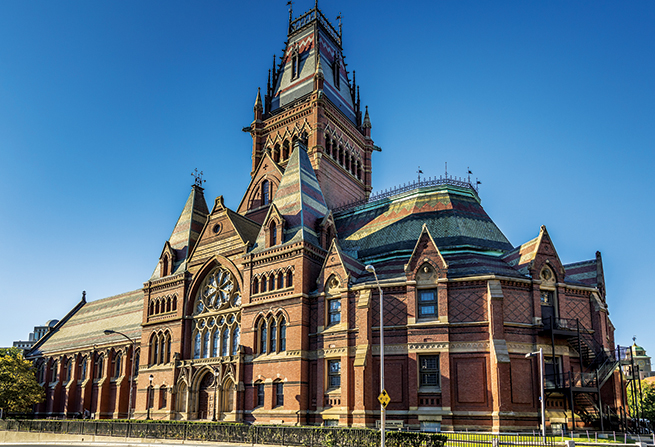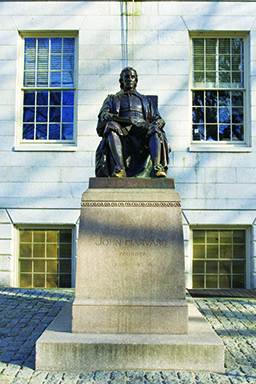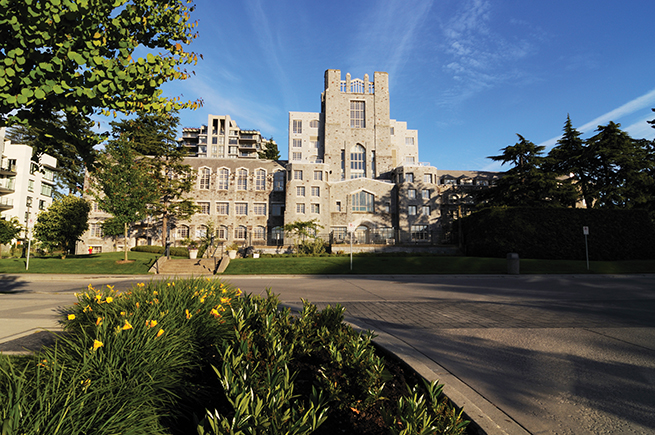Endowments of the Ivy League Schools Generate Significant Returns
- Caifu Magazine | by Blake Friesen
- EN
The purpose of the gift, for example, might be to acquire books for a library, to support a professorship, to set up a scholarship or to pay for research in a particular department. To increase the size of their endowments, universities court successful alumni and then invest the gifts to generate a return.
For the best-known universities in North America, Europe and even parts of the Middle East, endowments often contribute a substantial amount of money toward day-to-day operations, scholarships, student financial aid programs, faculty research and special projects. For the most part, endowments are created when a university receives a gift, usually cash or securities, with the intention of perpetually financing the university. The donor usually places restrictions on how the university can spend the gift. The purpose of the gift, for example, might be to acquire books for a library, to support a professorship, to set up a scholarship or to pay for research in a particular department. To increase the size of their endowments, universities court successful alumni and then invest the gifts to generate a return.
By the end of 2014, according to the Commonfund Study of Endowments report from the National Association of College and University Business Officers (NACUBO), there were over 800 educational institutions accounting for $516-billion in endowment assets in North America. These endowments returned an average of 15.5 per cent, after fees, up from an average of 11.7 per cent in fiscal 2013. The NACUBO study also revealed there are 91 institutions with endowments of over $1-billion, which averaged slightly better with a return of 16.5 per cent.
Largest endowment in the world
Harvard University lays claim to the world’s largest endowment, with more than 12,000 funds accounting for $36.4-billion in the university’s fiscal year ended June 30, 2014. The university says 70 per cent of the funds in its endowment are restricted to specific programs, departments or purposes, and the money is to be spent in accordance with strict terms set forth by the donor. Unrestricted funds account for the remaining 30 per cent, left to the administrators to spend as they see fit. Remember, the purpose of the endowment is that it must be maintained in perpetuity so the university is obligated to preserve the purchasing power and spend only a small percentage of the returns from the endowment each year, usually around 5 per cent. With an endowment as large as Harvard’s, however, that adds up to more than $1.5-billion in annual contributions. The university remains heavily reliant on its endowment funds, with net returns contributing to a little over one-third of the university’s total operating revenue.
The university is often the beneficial recipient of a portion of the money earned by its numerous successful alumni, who donate millions. Chinese students who graduated from Ivy League schools have recently received headlines for their donations. China, the world’s biggest exporter of foreign students to the United States, is a large source of donations to Harvard. Late last year, Harvard graduate Gerald Chen became the university’s largest donor by gifting $350-million to the university’s School of Public Health. In exchange, the School of Public Health will be renamed in honour of Mr. Chan’s late father, Chan Tseng-His. Gerald Chan and his brother, Ronnie, manage a private equity fund, Morningside Group, as well as the Hang Lung Group, a real estate development group founded by their father. Hang Lung has built many of China’s iconic structures, including Plaza 66 in Shanghai.
How does Harvard manage its endowment fund?
In 1974, the university formed Harvard Management Company (HMC), a non-profit, wholly owned subsidiary of Harvard University that has one straightforward mission: support the university by investing and enhancing its financial resources for the long term. Carrying out the mission is a difficult task. HMC directors and management work together each year to design a policy portfolio to achieve three objectives: (1) growth of the portfolio; (2) sufficient liquidity; and (3) appropriate risk management.
HMC currently manages about one-third of the funds in the endowment, while external companies manage the rest. Since 2008, the trend HMC’s policy has been to move away from public commodities, leverage and fixed income, and move toward private equity and real estate. In the company’s 2014 annual endowment report, former HMC president Jane Mendillo discusses the fund’s focus on emerging markets, noting that with an 11 per cent exposure the fund believes that it represents attractive long-term investment opportunities that are trading at low valuations, even though the sector has underperformed in recent years. As for private equity, Ms. Mendillo provides two reasons that HMC has increased its allocation: (1) “We believe that targeted and judicious exposure to this asset class can lead to higher returns; and (2) while the portfolio experienced liquidity constraints over the past five to six years, the liquidity profile of the endowment is now improved, allowing us to strategically increase our position in illiquid assets.”
Ms. Mendillo resigned as president of HMC toward the end of last year. Her replacement, Stephen Blyth, took over Jan. 1, 2015. He teaches quantitative finance at Harvard, and previously worked as head of internal management and head of public markets at HMC, which he joined in 2006. Emily Guadagnoli, a vice-president at HMC, says any changes to the management company since Mr. Blythe’s arrival will be discussed in the annual endowment letter, due in September.
The second-largest endowment, not far behind Harvard, is Yale University, which should come as no surprise, and the third-largest endowment is overseas in the Middle East. It is King Abdullah University of Science and Technology, a new public research university in Thuwal, Saudi Arabia, which has an endowment of more than $20-billion. The university, which opened its doors in September, 2009, focuses on graduate education and research, and competes with the world’s best-known universities by offering first-rate tools, facilities and laboratories. For example, it has a supercomputer, Shaheen, which is one of the most powerful computers in the world and was developed by IBM. The university is Saudi Arabia’s first co-ed college campus and it is often referred to as the Arab MIT.
The current king of Saudi Arabia, Abdullah bin Abdulaziz Al Saud, became the world’s largest donor in 2008 when he bestowed the university with a $10-billion endowment.
Canadian endowments
With a smaller population, Canada has a tough time competing with the United States when it comes to capitalization. Canadian universities, although well regarded, are also less famous than the Ivy League schools in the U.S. such as Harvard or Yale. As such, the endowments in Canada are smaller, but they are commendable in size. The University of British Columbia, for example, has an endowment worth $1.33-billion as of March 31, 2015. It is managed by the UBC Investment Management Trust Inc. (IMANT), a wholly owned UBC subsidiary established in March, 2003.
The target return objective of the UBC endowment fund is 6.15 per cent, representing an annual spending rate of 3.5 per cent, inflation of 2 per cent and fund expenses of 0.65 per cent. Two years ago, IMANT adopted a long-term policy mix for the assets comprising 20 per cent in fixed income (comprising 2 per cent in cash, 13 per cent in bonds, 5 per cent in mortgages), 40 per cent in public equities (comprising 15 per cent in Canadian equities, 15 per cent in global equities, 10 per cent in emerging equities), and 40 per cent in alternatives (comprising 10 per cent in each of private equity, real estate, infrastructure equity and absolute return strategy). IMANT’s chief executive officer, Jai Parihar, is guiding the endowment toward that mix, though it currently sits at 19.4 per cent fixed income, 58.4 per cent public equity and 22.3 per cent alternatives. In its fiscal 2014, the endowment earned 13.7 per cent.
The endowment has returned 10.7 per cent over five years and 6.7 per cent over 10 years, keeping in line with the objective total market return. Only the past four years have been overseen by Mr. Parihar. IMANT appointed Mr. Parihar in May, 2011, though he already been on the board of directors since March, 2010. Before joining IMANT, he spent seven years, 2002 to 2009, as the chief investment officer of the Alberta Investment Corp. For his work at IMANT, he is the university’s fifth-highest paid employee, having earned $421,125 in 2014 (a modest amount, to be fair, for someone managing over $1-billion).
IMANT slightly outperformed its Canadian peers, with the University of Toronto Asset Management Corp., the non-profit responsible for the U of T’s endowment fund, generating a return of 12.9 per cent for its $2.29-billion endowment fund. It is difficult to compare annual returns with McGill University because the university’s fiscal year ends on April 30, as opposed to Dec. 31. However, adjusting the figures to determine the performance the McGill Office of Investments, the non-profit management company that handles McGill University’s endowment, we learn the fund generated an adjusted annual return of 12.3 per cent.
The UBC endowment fund, while small compared with the bigger endowment funds in the U.S., still draws impressive donations from its alumni. Earlier this year, for example, Peter Allard donated $30-million to UBC’s Faculty of Law. In recognition of his gift, the largest gift to ever to a Canadian law school, the university renamed the law school the Peter A. Allard School of Law.















